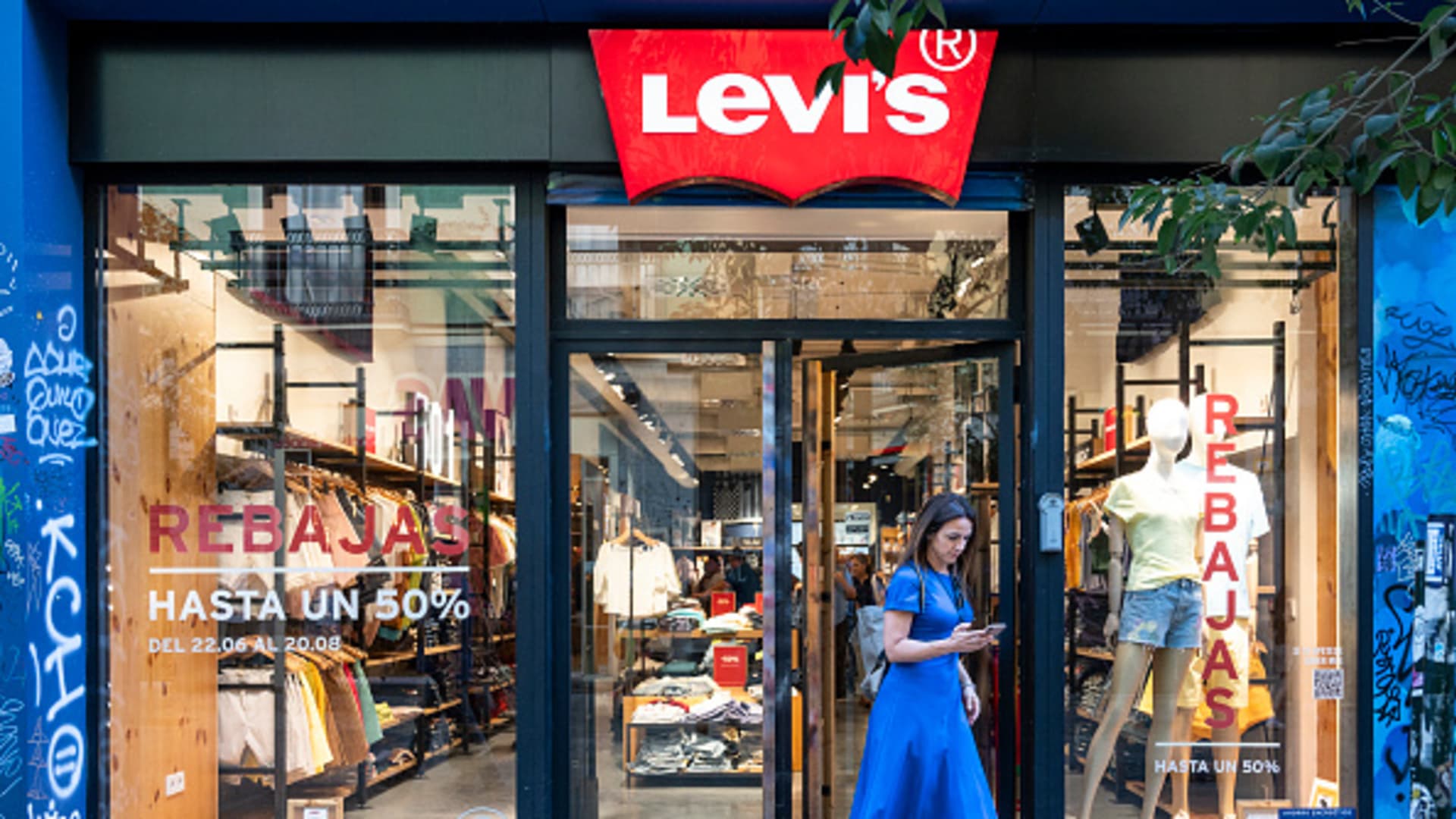Denim is having a moment with consumers, but it hasn't led to a major sales boost at Levi Strauss. The jeans creator on Wednesday posted fiscal second
Denim is having a moment with consumers, but it hasn’t led to a major sales boost at Levi Strauss.
The jeans creator on Wednesday posted fiscal second-quarter revenue that fell just short of Wall Street’s expectations at a time when shoppers are stocking their wardrobes with denim dresses, skirts and ultra low-rise baggy pants.
Levi’s posted better-than-expected earnings as its direct sales to consumers and cost cutting continue to bear fruit. The company raised its dividend by 8% to 13 cents per share, its first increase in six quarters.
Still, shares fell about 12% in extended trading.
Here’s how Levi’s performed during the quarter compared with what Wall Street was anticipating, based on a survey of analysts by LSEG:
- Earnings per share: 16 cents adjusted vs. 11 cents expected
- Revenue: $1.44 billion vs. $1.45 billion expected
The company’s reported net income for the three-month period that ended May 26 was $18 million, or 4 cents per share, compared with a loss of $1.6 million, or zero cents a share, a year earlier. Excluding one-time items, Levi’s posted earnings of $66 million, or 16 cents per share.
Sales rose to $1.44 billion, up about 8% from $1.34 billion a year earlier. However, the sales jump was coming off of an easier comparison.
In the year-ago period, sales were down 9% after Levi’s shifted its wholesale shipments from its fiscal second quarter into its fiscal first quarter. The shift reduced sales last year by about $100 million, the company said previously. Excluding the shift, as well as the exit of Levi’s Denizen business, sales would have been up by only about 1% in its most recent quarter compared to the year-ago period.
Finance chief Harmit Singh attributed the sales miss to unfavorable foreign exchange conditions and weak sales at Docker’s. During the quarter, the khaki and chinos brand saw $82.4 million in sales, up 8.6% from $75.8 million in the year ago period. It’s not clear how sales at Docker’s were affected by the timing of Levi’s wholesale orders.
“People are generally cautious,” Singh told CNBC in an interview. “It’s not necessarily an environment where people are buying a lot, people are cautious.”
While Levi’s posted a strong earnings beat, it only reaffirmed its full-year guidance, which was in line with estimates. The company continues to expect full-year earnings per share to be between $1.17 and $1.27, which now includes a 5-cent hit coming from the company’s new distribution and logistics strategy.
Levi’s said it is transitioning from a primarily owned-and-operated distribution and logistics network in the U.S. and Europe to one that relies more on third parties.
“In the near term, these changes require the parallel operation of new and old facilities for the rest of 2024, resulting in a transitory increase in distribution costs,” the company said.
The change allows Levi’s to shift the responsibility of final mile delivery to third parties. The denim maker noted that it has new terms with its supplier that result in Levi’s taking ownership of inventory closer to the point of shipment rather than its eventual destination. Levi’s distribution network was built for a business that primarily sold to wholesalers, and now it needs to change into one that’s more focused on selling directly to consumers.
The changes are necessary because nearly half of Levi’s sales these days are coming from its own website and stores.
Direct-to-consumer sales jumped 8% during the quarter, representing 47% of overall sales. Online sales increased 19%.
“Our transformational pivot to operating as a DTC-first company is yielding positive results around the world, giving me great confidence that we will achieve accelerated, profitable growth for the rest of the year and beyond,” CEO Michelle Gass said in a statement.
During the quarter, wholesale revenue grew 7%, but excluding the shift in timing of wholesale orders, sales in the channel decreased 4%. Singh noted that wholesale revenue improved on a sequential basis, but the company has a “conservative” view of the channel’s growth moving forward.
By building out its own direct channels, Levi’s enjoys higher profits, better data on its consumers and less reliance on shaky wholesalers like Macy’s and Kohl’s, which are continuing to shrink and fall out of favor with consumers.
However, selling directly can also be more expensive, and can come with unexpected hiccups that can impact sales and drain profits. For example, when someone buys a pair of Levi’s from Macy’s and wants to return them, Macy’s typically bears that cost. Under a direct model, that responsibility, including the cost and logistics, would fall on Levi’s.
Nike has come to be known as a cautionary tale for retailers long reliant on wholesalers that try to expand direct sales.
For a while, Nike’s focus on direct sales boosted revenue and profits, but some critics said the strategy shift led to a slowdown in innovation, and ultimately, market share losses.
Recently, the company acknowledged that it erred when it cut off so many of its wholesale partners and said it has since “corrected” that.
Read the full earnings release here.
www.cnbc.com

COMMENTS